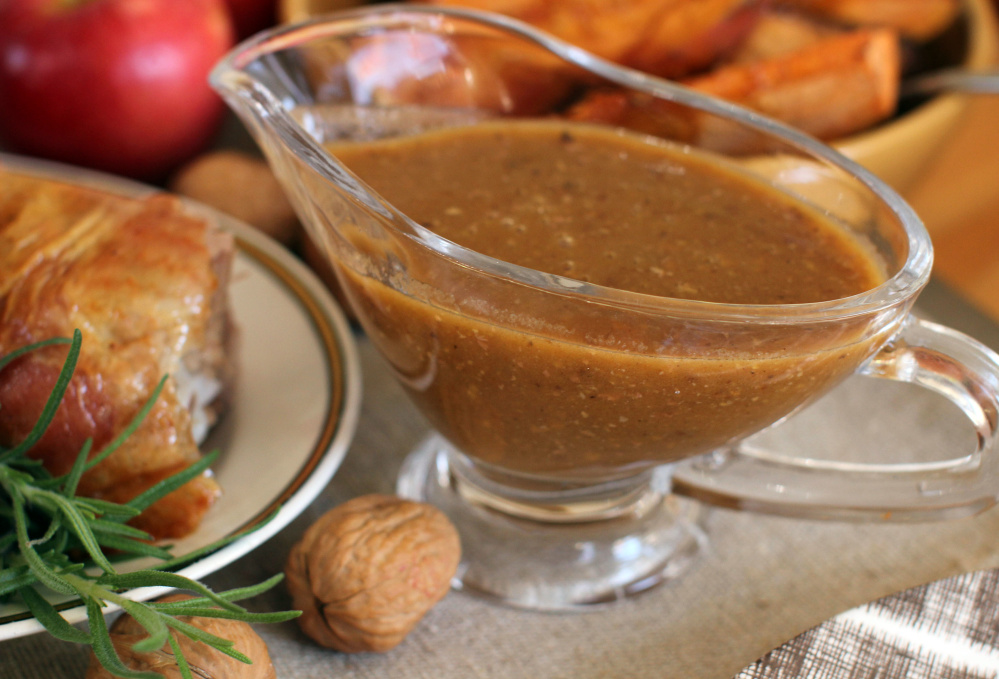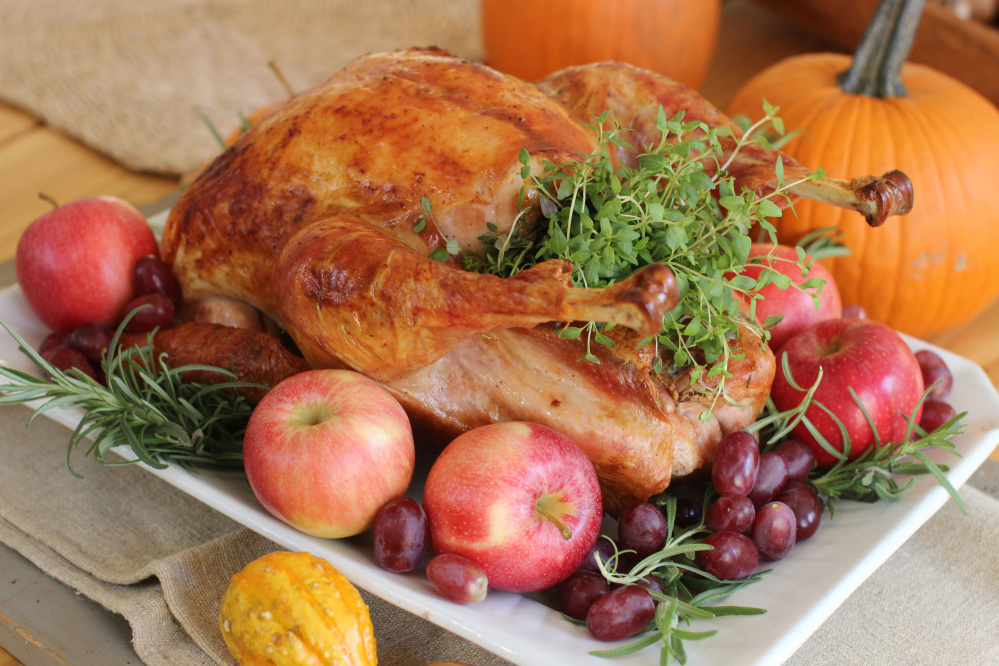Delivering a succulent, perfectly browned, magazine-worthy specimen – presents the holiday’s biggest challenge.
To unlock the secrets of roasting a great bird, we asked some of the country’s top chefs and food experts the tough questions: To brine or not to brine? High-heat or slow roast? Basted or not? Then we culled their answers to produce our recipe for the ultimate bird.
THE BIRD: A 12- to 14-pound turkey gives you the best chance of cooking success. Anything larger is difficult. That’s because the white and dark meat need to be cooked to different temperatures, and the bigger the bird the more difficult it is to nail that. If you need more than 14 pounds of turkey, our experts suggest roasting two.
Most of our chefs favor fresh, free-range turkeys. But if you can’t afford or find a fresh, free-range turkey, don’t despair. “In our testing, we found that fresh didn’t always equal better,” America’s Test Kitchen editor Bridget Lancaster said via email.
THE BRINE: Dry brine, wet brine, it doesn’t matter, our experts say, just brine that bird. The typical wet brine submerges the turkey in water containing salt, sugar and aromatics such as sage, rosemary, thyme and black peppercorns. Richard DeShantz, executive chef at Pittsburgh hot spots Meat & Potatoes and Butcher and the Rye, gives his birds a subtle sweetness with a 50-50 mix of apple cider and water. Chef Michael Solomonov, who just released the first cookbook from his Philadelphia restaurant Zahav, creates a Mediterranean profile with allspice, dill seed and black cardamom. Point being, feel free to play with the seasonings.
Wet-brined birds must be patted down, then air-dried for several hours after brining before roasting them. To avoid the mess, chef Vivian Howard of Chef and the Farmer in Kinston, N.C., suggests using a dry brine – a rub of salt, sugar and dried herbs – a day or two before cooking. Dry-brined birds also will have a crispier skin, she says.
THE BASTE: Basting is a given, our experts say, but some chefs take it to the extreme. Howard’s secret: soak a triple-layered sheet of cheesecloth in melted butter and drape it over the breast of your roasting turkey. “The cheesecloth slowly releases the butter onto the bird,” she says. “That’s my thing that I do.”
Not ready to wrap your bird like that? Use the juices that collect in the pan and baste the turkey every 20 to 30 minutes, but no more.
THE ROAST: To promote a crisp, brown skin, many chefs recommend cranking the oven to 425 F during the first or last 30 to 45 minutes of cooking. Just be sure to protect the delicate breast meat. If using high heat at the beginning, start with the bird breast-side down, Lancaster says. After 45 minutes, turn the turkey over and continue roasting at 325 F.
If you brown at the end, cook the bird breast-side up at 325 F, DeShantz says, but tent the breast with foil. Remove the foil for the last hour of cooking, then increase the heat to 425 F for the last 30 minutes.
THE TEMPERATURE: Use a good instant-read thermometer and test the temperature early and often. Our chefs generally vote to let breast meat reach somewhere between 160 F and 165 F, and to take dark meat to around 180 F.
But Harold McGee, food scientist and author of “On Food and Cooking,” says to pull the bird out of the oven when the breast hits 150 degrees and the thigh registers 160 degrees. “Lower temperatures mean juicier meat,” McGee says.
And what’s his trick for protecting the breast? “Take the bird out of the fridge a few hours in advance of cooking,” he says. “Let the legs warm up, but cover the breast with a bag of crushed ice.” Seriously.
Roasted meats of all persuasions continue to rise in temperature after they are removed from the oven. That’s why if you leave it in the oven until it reaches 165 F you’ll end up with an overcooked turkey.
THE REST: Let your cooked turkey sit, undisturbed, on a platter for at least 30 minutes before carving. This allows the bird to finish cooking more gently and reabsorb all of its juices, producing moist meat. To prevent it from cooling, cover the turkey with foil, then layer several kitchen or bath towels over that.
BORDERLINE HERETICAL ADVICE: Dismember the bird. That’s right. DeShantz recommends butchering the turkey raw and cooking its parts separately. “Separating the dark meat from the white and cooking them separately is one of the best ways to nail the temperature difference between properly cooked thighs and breasts,” he said via email. “This technique results in better cooking, better seasoning, easier carving and better gravy.”
PAN GRAVY
Makes about 3 cups
Drippings from roasting a turkey
Butter, melted (as needed)
1/2 cup white wine
2 cups low-sodium turkey or chicken broth or stock
3 to 4 tablespoons Wondra (instant) flour
Kosher salt and ground black pepper
Carefully transfer the turkey drippings from a roasting pan into a measuring cup. Do not scrape or clean the pan. Allow to sit for 5 minutes to settle. Once the drippings have settled, measure out 1/2 cup of the fat (that will be the top layer in the cup). If you have more than 1/2 cup fat, pour some off and discard. If you do not have enough, add butter to make the difference.
Return the 1/2 cup fat and all the liquid drippings to the roasting pan and set the pan over medium heat (you likely will need to use 2 burners). Add the white wine and scrap the bottom of the pan with a wooden spoon to loosen any browned bits.
Whisk in the broth or stock and bring to a simmer, whisking continuously. Sprinkle in the Wondra flour, continuing to whisk, and cook over medium heat until thickened, 2 to 3 minutes. Season with salt and pepper. If desired, before serving strain through a mesh strainer.
Copy the Story LinkSend questions/comments to the editors.




Success. Please wait for the page to reload. If the page does not reload within 5 seconds, please refresh the page.
Enter your email and password to access comments.
Hi, to comment on stories you must . This profile is in addition to your subscription and website login.
Already have a commenting profile? .
Invalid username/password.
Please check your email to confirm and complete your registration.
Only subscribers are eligible to post comments. Please subscribe or login first for digital access. Here’s why.
Use the form below to reset your password. When you've submitted your account email, we will send an email with a reset code.